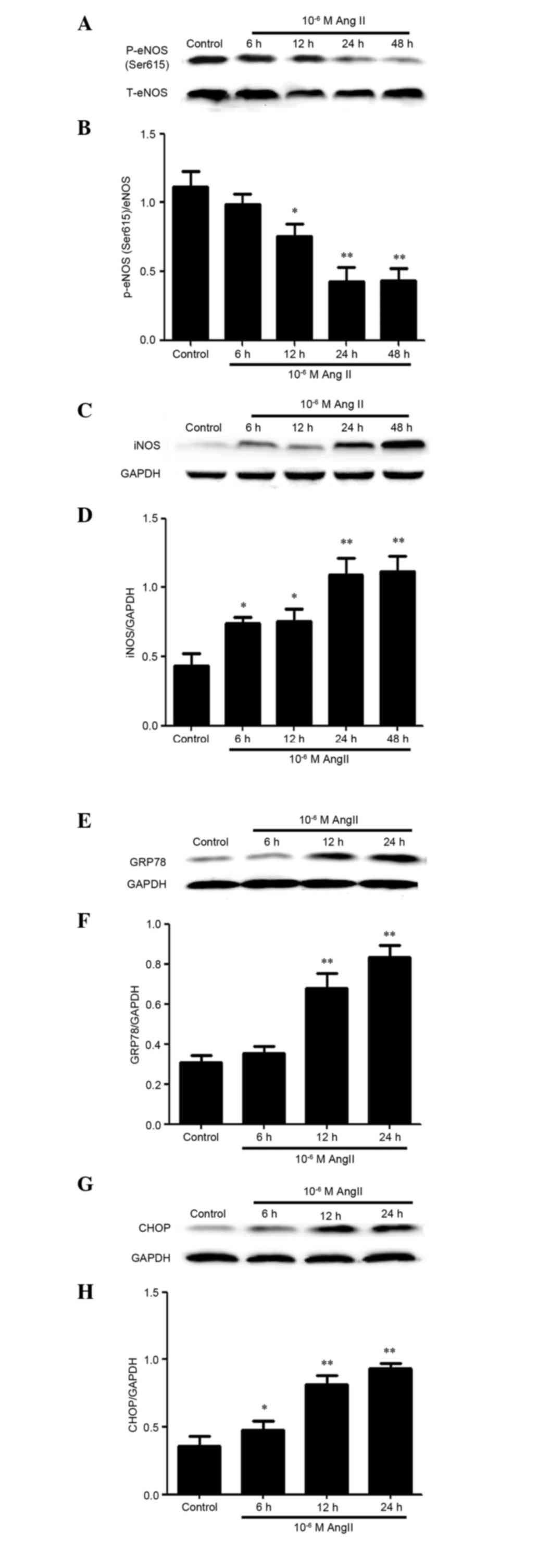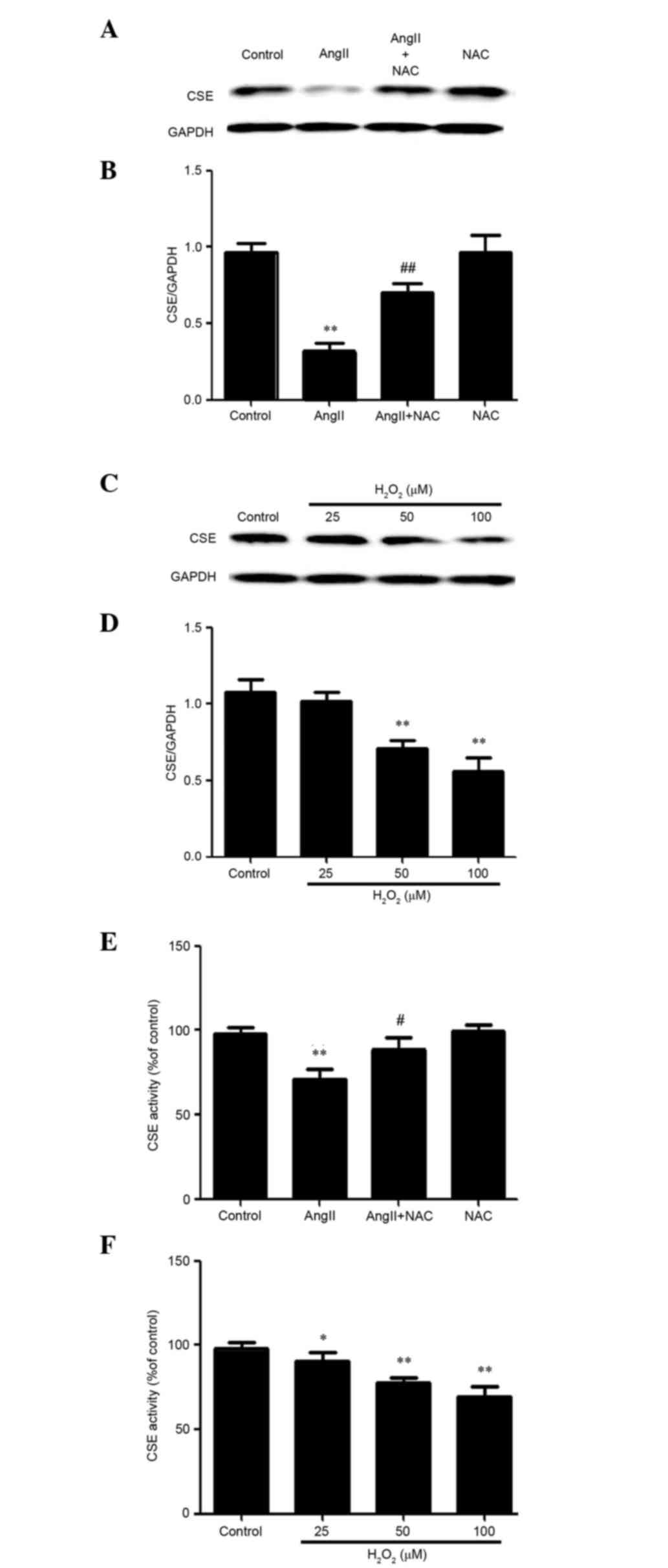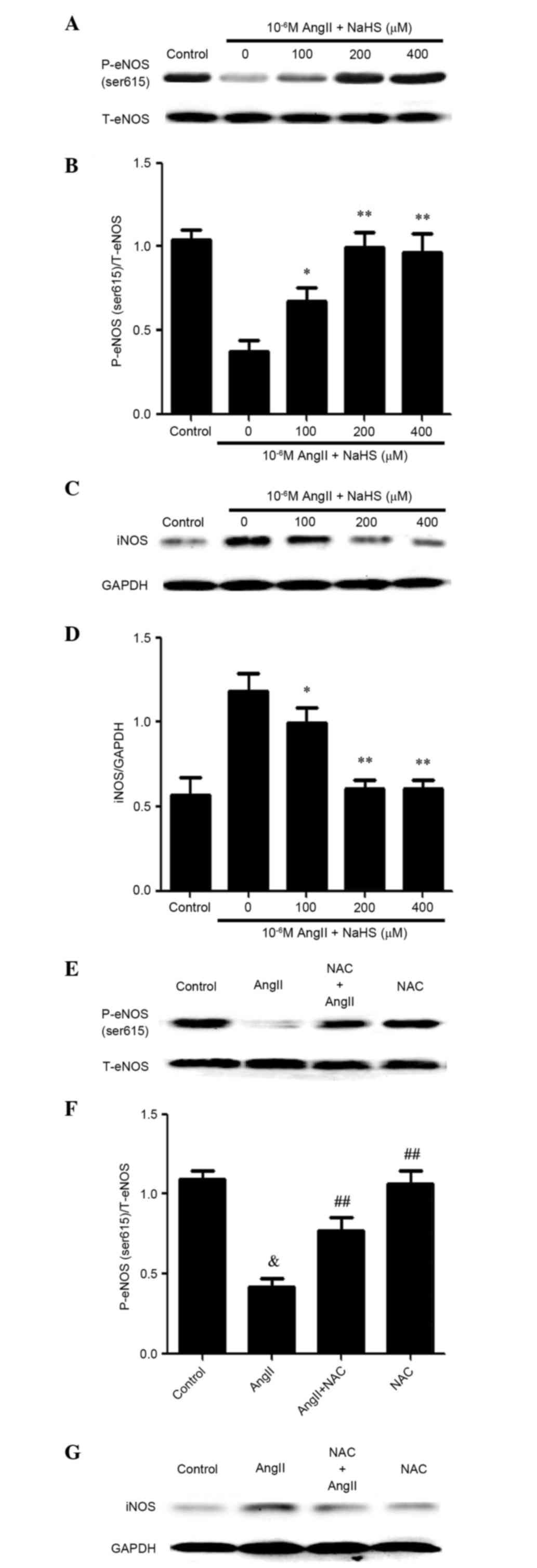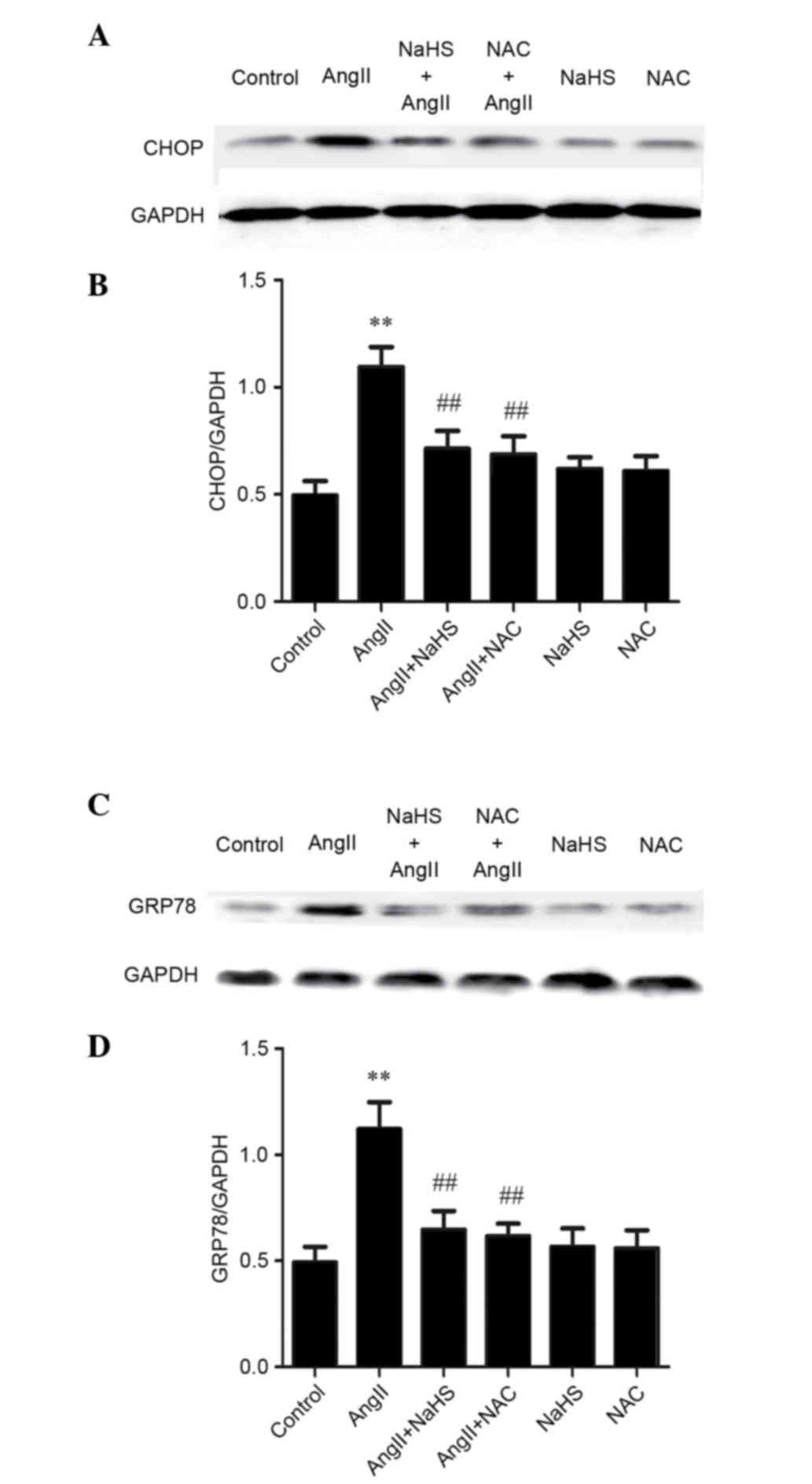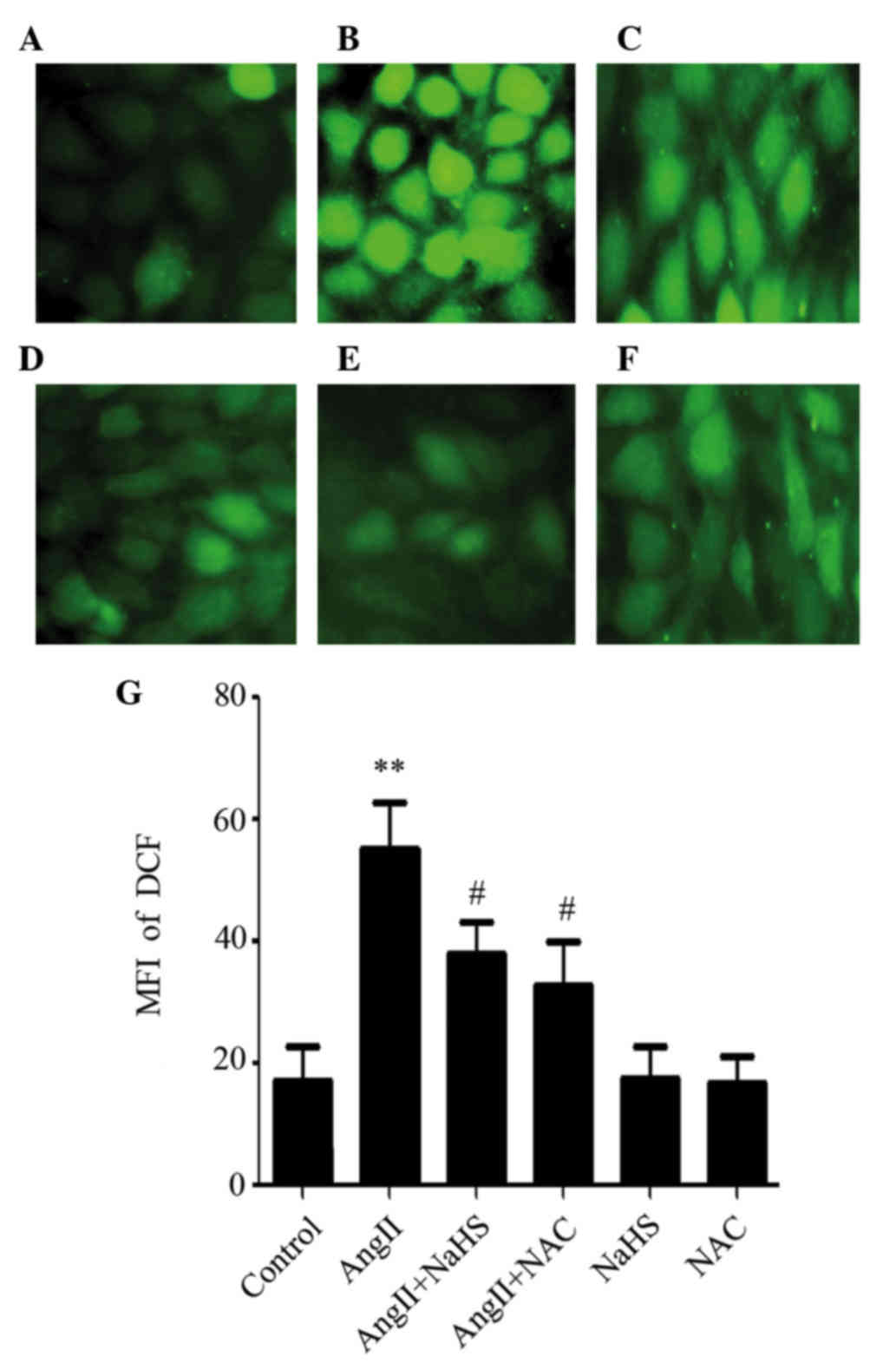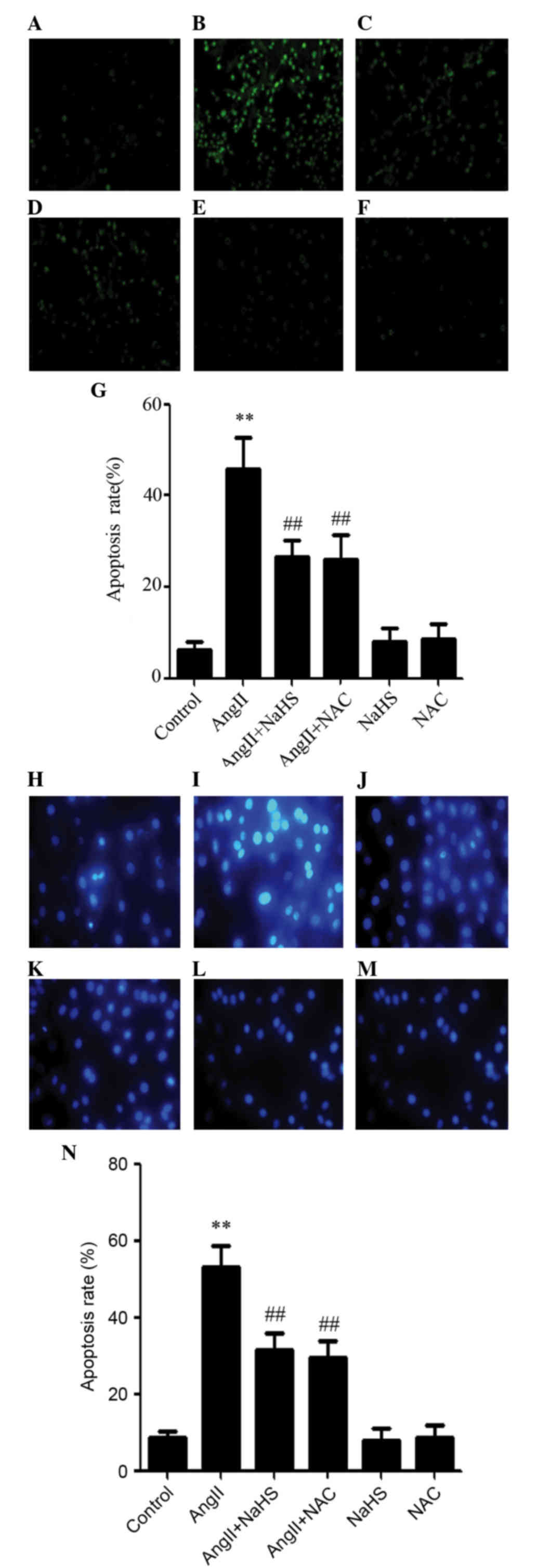|
1
|
Ding Z, Liu S, Wang X, Dai Y, Khaidakov M,
Romeo F and Mehta JL: LOX-1, oxidant stress, mtDNA damage,
autophagy, and immune response in atherosclerosis. Can J Physiol
Pharmacol. 92:524–530. 2014. View Article : Google Scholar : PubMed/NCBI
|
|
2
|
Messner B and Bernhard D: Smoking and
cardiovascular disease: Mechanisms of endothelial dysfunction and
early atherogenesis. Arterioscler Thromb Vasc Biol. 34:509–515.
2014. View Article : Google Scholar : PubMed/NCBI
|
|
3
|
Stam F, van Guldener C, Becker A, Dekker
JM, Heine RJ, Bouter LM and Stehouwer CD: Endothelial dysfunction
contributes to renal function-associated cardiovascular mortality
in a population with mild renal insufficiency: The Hoorn study. J
Am Soc Nephrol. 17:537–545. 2006. View Article : Google Scholar : PubMed/NCBI
|
|
4
|
Geronikaki AA, Pitta EP and Liaras KS:
Thiazoles and thiazolidinones as antioxidants. Curr Med Chem.
20:4460–4480. 2013. View Article : Google Scholar : PubMed/NCBI
|
|
5
|
Wang X, Yuan B, Dong W, Yang B, Yang Y,
Lin X and Gong G: Humid heat exposure induced oxidative stress and
apoptosis in cardiomyocytes through the angiotensin II signaling
pathway. Heart Vessels. 30:396–405. 2015. View Article : Google Scholar : PubMed/NCBI
|
|
6
|
Li L, Li N, Pang W, Zhang X, Hammock BD,
Ai D and Zhu Y: Opposite effects of gene deficiency and
pharmacological inhibition of soluble epoxide hydrolase on cardiac
fibrosis. PLoS One. 9:e940922014. View Article : Google Scholar : PubMed/NCBI
|
|
7
|
Johar S, Cave AC, Narayanapanicker A,
Grieve DJ and Shah AM: Aldosterone mediates angiotensin II-induced
interstitial cardiac fibrosis via a Nox2-containing NADPH oxidase.
FASEB J. 20:1546–1548. 2006. View Article : Google Scholar : PubMed/NCBI
|
|
8
|
Kittikulsuth W, Looney SW and Pollock DM:
Endothelin ET(B) receptors contribute to sex differences in blood
pressure elevation in angiotensin II hypertensive rats on a
high-salt diet. Clin Exp Pharmacol Physiol. 40:362–370. 2013.
View Article : Google Scholar : PubMed/NCBI
|
|
9
|
Marrachelli VG, Mastronardi ML, Sarr M,
Soleti R, Leonetti D, Martínez MC and Andriantsitohaina R: Sonic
hedgehog carried by microparticles corrects angiotensin II-induced
hypertension and endothelial dysfunction in mice. PLoS One.
8:e728612013. View Article : Google Scholar : PubMed/NCBI
|
|
10
|
Schäfer SC, Pellegrin M, Wyss C, Aubert
JF, Nussberger J, Hayoz D, Lehr HA and Mazzolai L: Intravital
microscopy reveals endothelial dysfunction in resistance arterioles
in Angiotensin II-induced hypertension. Hypertens Res. 35:855–861.
2012. View Article : Google Scholar : PubMed/NCBI
|
|
11
|
Lin LY, Lin CY, Su TC and Liau CS:
Angiotensin II-induced apoptosis in human endothelial cells is
inhibited by adiponectin through restoration of the association
between endothelial nitric oxide synthase and heat shock protein
90. FEBS Lett. 574:106–110. 2004. View Article : Google Scholar : PubMed/NCBI
|
|
12
|
Matsumoto S, Shimabukuro M, Fukuda D,
Soeki T, Yamakawa K, Masuzaki H and Sata M: Azilsartan, an
angiotensin II type 1 receptor blocker, restores endothelial
function by reducing vascular inflammation and by increasing the
phosphorylation ratio Ser (1177)/Thr(497) of endothelial nitric
oxide synthase in diabetic mice. Cardiovasc Diabetol. 13:302014.
View Article : Google Scholar : PubMed/NCBI
|
|
13
|
FT IV Billings, Pretorius M, Schildcrout
JS, Mercaldo ND, Byrne JG, Ikizler TA and Brown NJ: Obesity and
oxidative stress predict AKI after cardiac surgery. J Am Soc
Nephrol. 23:1221–1228. 2012. View Article : Google Scholar : PubMed/NCBI
|
|
14
|
Matsumoto T, Kobayashi T and Kamata K:
Relationships among ET-1, PPARgamma, oxidative stress and
endothelial dysfunction in diabetic animals. J Smooth Muscle Res.
44:41–55. 2008. View Article : Google Scholar : PubMed/NCBI
|
|
15
|
Xing S, Yang X, Li W, Bian F, Wu D, Chi J,
Xu G, Zhang Y and Jin S: Salidroside stimulates mitochondrial
biogenesis and protects against H2O2-induced endothelial
dysfunction. Oxid Med Cell Longev. 2014:9048342014. View Article : Google Scholar : PubMed/NCBI
|
|
16
|
Kei A, Tellis C, Liberopoulos E, Tselepis
A and Elisaf M: Effect of switch to the highest dose of
rosuvastatin versus add-on-statin fenofibrate versus add-on-statin
nicotinic acid/laropiprant on oxidative stress markers in patients
with mixed dyslipidemia. Cardiovasc Ther. 32:139–146. 2014.
View Article : Google Scholar : PubMed/NCBI
|
|
17
|
Bozaykut P, Sozen E, Yazgan B, Karademir B
and Kartal-Ozer N: The role of hypercholesterolemic diet and
vitamin E on Nrf2 pathway, endoplasmic reticulum stress and
proteasome activity. Free Radic Biol Med. 75 Suppl 1:S242014.
View Article : Google Scholar : PubMed/NCBI
|
|
18
|
Hasnain SZ, Prins JB and McGuckin MA:
Oxidative and endoplasmic reticulum stress in β-cell dysfunction in
diabetes. J Mol Endocrinol. 56:R33–R54. 2016. View Article : Google Scholar : PubMed/NCBI
|
|
19
|
Cimellaro A, Perticone M, Fiorentino TV,
Sciacqua A and Hribal ML: Role of endoplasmic reticulum stress in
endothelial dysfunction. Nutr Metab Cardiovasc Dis. 26:863–871.
2016. View Article : Google Scholar : PubMed/NCBI
|
|
20
|
Simon-Szabó L, Kokas M, Mandl J, Kéri G
and Csala M: Metformin attenuates palmitate-induced endoplasmic
reticulum stress, serine phosphorylation of IRS-1 and apoptosis in
rat insulinoma cells. PLoS One. 9:e978682014. View Article : Google Scholar : PubMed/NCBI
|
|
21
|
Wang XY, Yang CT, Zheng DD, Mo LQ, Lan AP,
Yang ZL, Hu F, Chen PX, Liao XX and Feng JQ: Hydrogen sulfide
protects H9c2 cells against doxorubicin-induced cardiotoxicity
through inhibition of endoplasmic reticulum stress. Mol Cell
Biochem. 363:419–426. 2012. View Article : Google Scholar : PubMed/NCBI
|
|
22
|
Li PC, Yang CC, Hsu SP and Chien CT:
Repetitive progressive thermal preconditioning hinders thrombosis
by reinforcing phosphatidylinositol 3-kinase/Akt-dependent
heat-shock protein/endothelial nitric oxide synthase signaling. J
Vasc Surg. 56:159–170. 2012. View Article : Google Scholar : PubMed/NCBI
|
|
23
|
Kassan M, Galán M, Partyka M, Saifudeen Z,
Henrion D, Trebak M and Matrougui K: Endoplasmic reticulum stress
is involved in cardiac damage and vascular endothelial dysfunction
in hypertensive mice. Arterioscler Thromb Vasc Biol. 32:1652–1661.
2012. View Article : Google Scholar : PubMed/NCBI
|
|
24
|
Wang X, Bai YP, Hong D, Gao HC, Li LF, Li
CC, Zhu LP, Sun Q and Zhang GG: Ang II induces capillary formation
from endothelial cells via the AT1R-dependent inositol requiring
enzyme 1 pathway. Biochem Biophys Res Commun. 434:552–558. 2013.
View Article : Google Scholar : PubMed/NCBI
|
|
25
|
Chen ZF, Zhao B, Tang XY, Li W, Zhu LL,
Tang CS, DU JB and Jin HF: Hydrogen sulfide regulates vascular
endoplasmic reticulum stress in apolipoprotein E knockout mice.
Chin Med J (Engl). 124:3460–3467. 2011.PubMed/NCBI
|
|
26
|
Xue H, Yuan P, Ni J, Li C, Shao D, Liu J,
Shen Y, Wang Z, Zhou L, Zhang W, et al: H(2)S inhibits
hyperglycemia-induced intrarenal renin-angiotensin system
activation via attenuation of reactive oxygen species generation.
PLoS One. 8:e743662013. View Article : Google Scholar : PubMed/NCBI
|
|
27
|
Wen YD, Wang H, Kho SH, Rinkiko S, Sheng
X, Shen HM and Zhu YZ: Hydrogen sulfide protects HUVECs against
hydrogen peroxide induced mitochondrial dysfunction and oxidative
stress. PLoS One. 8:e531472013. View Article : Google Scholar : PubMed/NCBI
|
|
28
|
Marzetti E, Calvani R, Cesari M, Buford
TW, Lorenzi M, Behnke BJ and Leeuwenburgh C: Mitochondrial
dysfunction and sarcopenia of aging: From signaling pathways to
clinical trials. Int J Biochem Cell Biol. 45:2288–2301. 2013.
View Article : Google Scholar : PubMed/NCBI
|
|
29
|
Tomada I, Negrão R, Almeida H and Neves D:
Long-term high-fat consumption leads to downregulation of Akt
phosphorylation of eNOS at Ser1177 and upregulation of Sirtuin-1
expression in rat cavernous tissue. Age (Dordr). 36:597–611. 2014.
View Article : Google Scholar : PubMed/NCBI
|
|
30
|
Ripa P, Ornello R, Pistoia F, Carolei A
and Sacco S: The renin-angiotensin system: A possible contributor
to migraine pathogenesis and prophylaxis. Expert Rev Neurother.
14:1043–1055. 2014. View Article : Google Scholar : PubMed/NCBI
|
|
31
|
Wang W, Qiu L, Howard A, Solis N, Li C,
Wang X, Kopp JB and Levi M: Protective effects of aliskiren and
valsartan in mice with diabetic nephropathy. J Renin Angiotensin
Aldosterone Syst. 15:384–395. 2014. View Article : Google Scholar : PubMed/NCBI
|
|
32
|
Xu J, Wang G, Wang Y, Liu Q, Xu W, Tan Y
and Cai L: Diabetes- and angiotensin II-induced cardiac endoplasmic
reticulum stress and cell death: Metallothionein protection. J Cell
Mol Med. 13:1499–1512. 2009. View Article : Google Scholar : PubMed/NCBI
|
|
33
|
Park MH, Heo SJ, Park PJ, Moon SH, Sung
SH, Jeon BT and Lee SH: 6,6′-bieckol isolated from ecklonia cava
protects oxidative stress through inhibiting expression of ROS and
proinflammatory enzymes in high-glucose-induced human umbilical
vein endothelial cells. Appl Biochem Biotechnol. 174:632–643. 2014.
View Article : Google Scholar : PubMed/NCBI
|
|
34
|
Liu JJ, Li DL, Zhou J, Sun L, Zhao M, Kong
SS, Wang YH, Yu XJ, Zhou J and Zang WJ: Acetylcholine prevents
angiotensin II-induced oxidative stress and apoptosis in H9c2
cells. Apoptosis. 16:94–103. 2011. View Article : Google Scholar : PubMed/NCBI
|
|
35
|
Wong WT, Tian XY and Huang Y: Endothelial
dysfunction in diabetes and hypertension: Cross talk in RAS, BMP4,
and ROS-dependent COX-2-derived prostanoids. J Cardiovasc
Pharmacol. 61:204–214. 2013. View Article : Google Scholar : PubMed/NCBI
|
|
36
|
Dudzinski DM and Michel T: Life history of
eNOS: Partners and pathways. Cardiovasc Res. 75:247–260. 2007.
View Article : Google Scholar : PubMed/NCBI
|
|
37
|
Heltianu C, Costache G, Gafencu A, Diaconu
M, Bodeanu M, Cristea C, Azibi K, Poenaru L and Simionescu M:
Relationship of eNOS gene variants to diseases that have in common
an endothelial cell dysfunction. J Cell Mol Med. 9:135–142. 2005.
View Article : Google Scholar : PubMed/NCBI
|
|
38
|
El Accaoui RN, Gould ST, Hajj GP, Chu Y,
Davis MK, Kraft DC, Lund DD, Brooks RM, Doshi H, Zimmerman KA, et
al: Aortic valve sclerosis in mice deficient in endothelial nitric
oxide synthase. Am J Physiol Heart Circ Physiol. 306:H1302–H1313.
2014. View Article : Google Scholar : PubMed/NCBI
|
|
39
|
Albrecht EW, Stegeman CA, Heeringa P,
Henning RH and van Goor H: Protective role of endothelial nitric
oxide synthase. J Pathol. 199:8–17. 2003. View Article : Google Scholar : PubMed/NCBI
|
|
40
|
Nakao T, Morita H, Maemura K, Amiya E,
Inajima T, Saito Y, Watanabe M, Manabe I, Kurabayashi M, Nagai R
and Komuro I: Melatonin ameliorates angiotensin II-induced vascular
endothelial damage via its antioxidative properties. J Pineal Res.
55:287–293. 2013. View Article : Google Scholar : PubMed/NCBI
|
|
41
|
Zhou B, Li H, Liu J, Xu L, Zang W, Wu S
and Sun H: Intermittent injections of osteocalcin reverse
autophagic dysfunction and endoplasmic reticulum stress resulting
from diet-induced obesity in the vascular tissue via the
NFkB-p65-dependent mechanism. Cell Cycle. 12:1901–1913. 2013.
View Article : Google Scholar : PubMed/NCBI
|
|
42
|
Finckenberg P, Eriksson O, Baumann M,
Merasto S, Lalowski MM, Levijoki J, Haasio K, Kytö V, Muller DN,
Luft FC, et al: Caloric restriction ameliorates angiotensin
II-induced mitochondrial remodeling and cardiac hypertrophy.
Hypertension. 59:76–84. 2012. View Article : Google Scholar : PubMed/NCBI
|
|
43
|
Watanabe Y, Suzuki O, Haruyama T and
Akaike T: Interferon-gamma induces reactive oxygen species and
endoplasmic reticulum stress at the hepatic apoptosis. J Cell
Biochem. 89:244–253. 2003. View Article : Google Scholar : PubMed/NCBI
|
|
44
|
Wencker D, Chandra M, Nguyen K, Miao W,
Garantziotis S, Factor SM, Shirani J, Armstrong RC and Kitsis RN: A
mechanistic role for cardiac myocyte apoptosis in heart failure. J
Clin Invest. 111:1497–1504. 2003. View Article : Google Scholar : PubMed/NCBI
|
|
45
|
Szczesny B, Módis K, Yanagi K, Coletta C,
Le Trionnaire S, Perry A, Wood ME, Whiteman M and Szabo C: AP39, a
novel mitochondria-targeted hydrogen sulfide donor, stimulates
cellular bioenergetics, exerts cytoprotective effects and protects
against the loss of mitochondrial DNA integrity in oxidatively
stressed endothelial cells in vitro. Nitric Oxide. 41:120–130.
2014. View Article : Google Scholar : PubMed/NCBI
|
|
46
|
Pan LL, Liu XH, Gong QH, Wu D and Zhu YZ:
Hydrogen sulfide attenuated tumor necrosis factor-α-induced
inflammatory signaling and dysfunction in vascular endothelial
cells. PLoS One. 6:e197662011. View Article : Google Scholar : PubMed/NCBI
|
|
47
|
Snijder PM, Frenay AS, De Boer RA, Pasch
A, Hillebrands JL, Leuvenink HG and van Goor H: Exogenous
administration of thiosulfate, a donor of hydrogen sulfide,
attenuates angiotensin II-induced hypertensive heart disease in
rats. Br J Pharmacol. 172:1494–1504. 2015. View Article : Google Scholar : PubMed/NCBI
|
|
48
|
Zhang Y, Tang ZH, Ren Z, Qu SL, Liu MH,
Liu LS and Jiang ZS: Hydrogen sulfide, the next potent preventive
and therapeutic agent in aging and age-associated diseases. Mol
Cell Biol. 33:1104–1113. 2013. View Article : Google Scholar : PubMed/NCBI
|
|
49
|
Chaudhari N, Talwar P, Parimisetty A,
d'Hellencourt C Lefebvre and Ravanan P: A molecular web:
Endoplasmic reticulum stress, inflammation, and oxidative stress.
Front Cell Neurosci. 8:2132014. View Article : Google Scholar : PubMed/NCBI
|
|
50
|
Song XJ, Yang CY, Liu B, Wei Q, Korkor MT,
Liu JY and Yang P: Atorvastatin inhibits myocardial cell apoptosis
in a rat model with post-myocardial infarction heart failure by
downregulating ER stress response. Int J Med Sci. 8:564–572. 2011.
View Article : Google Scholar : PubMed/NCBI
|
|
51
|
Qabazard B, Ahmed S, Li L, Arlt VM, Moore
PK and Stürzenbaum SR: C. elegans aging is modulated by hydrogen
sulfide and the sulfhydrylase/cysteine synthase cysl-2. PLoS One.
8:e801352013. View Article : Google Scholar : PubMed/NCBI
|















